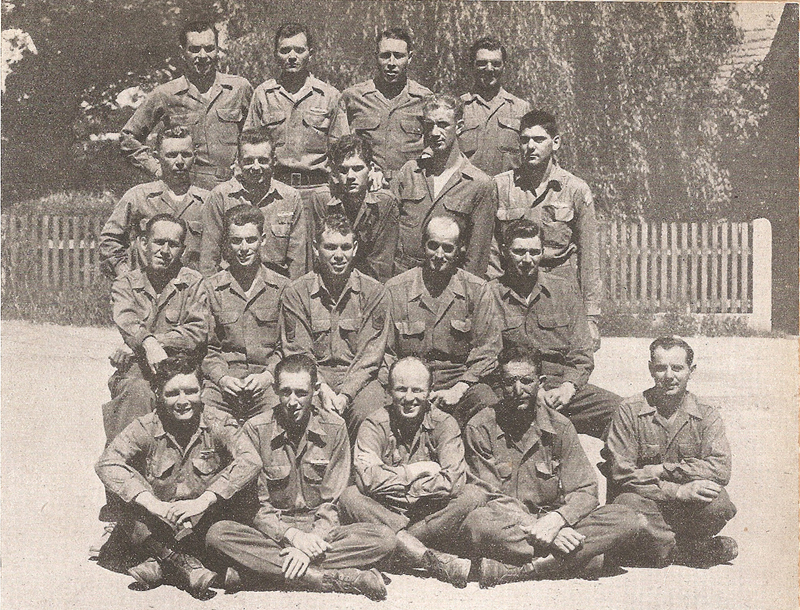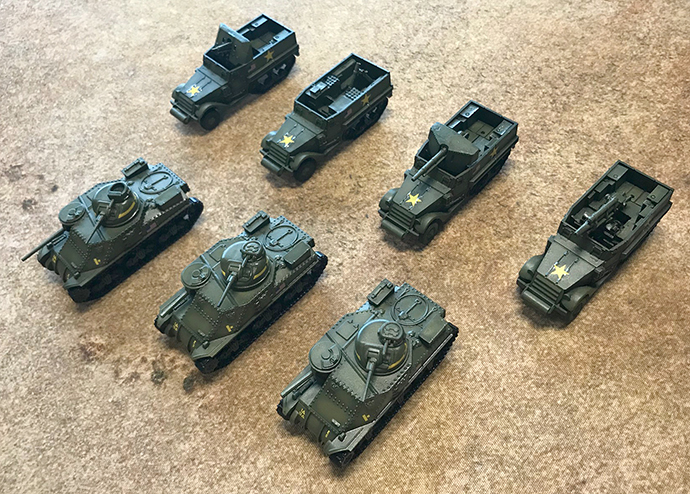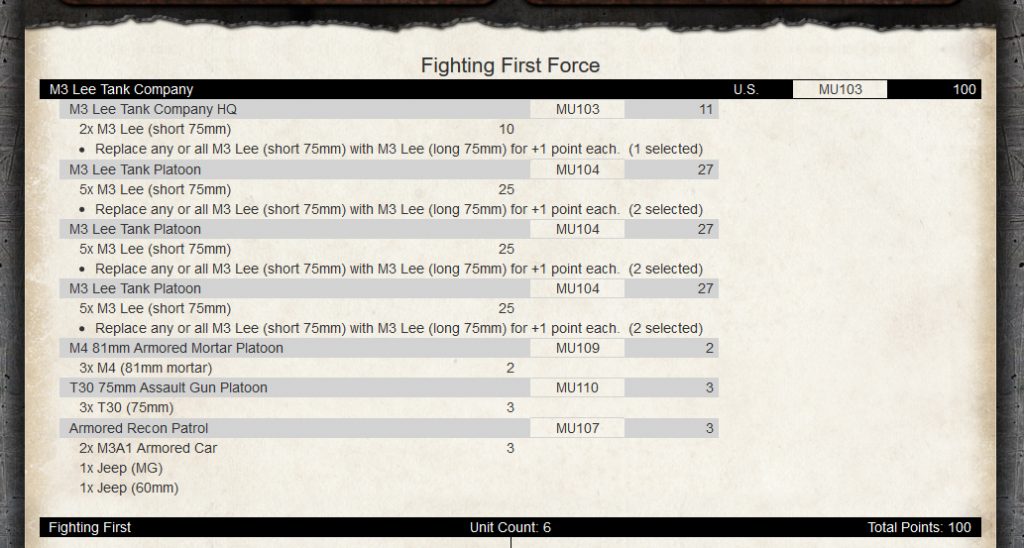Andrew is making good on his promise to freshen up his Red Banner Speedy Assaulters.
Wayne continues to spray up his StuGs
I’m working on my American Rifles.
Join the Battlefront team as we launch Bagration: Soviet
Andrew is making good on his promise to freshen up his Red Banner Speedy Assaulters.
Wayne continues to spray up his StuGs
I’m working on my American Rifles.
with Alexander Nebesky
I feel like this has been a pretty successful launch, especially given it’s my first! To celebrate, I’m taking a half hour out to have Aaron teach me how to airbrush as I ain’t never used one before.
I’m painting up an American Armo(u)red Rifle Platoon, a birthday gift form earlier this year that desperately needs a lick of paint.
with Jim Westerfield
From the mid-1930s until the late 1950s, U.S. Army infantry regiments in each division contained an Intelligence and Reconnaissance (I&R) platoon as part of the regimental headquarters company. In 1939, the I&R platoon Table of Organization & Equipment (TO&E) authorized 10 infantrymen to make up the unit. This was expanded to 18 infantrymen in 1940 and the platoon TO&E, in 1941, was authorized to include 1/4-ton vehicles (Jeeps).

The I&R platoon consists of a platoon headquarters and two reconnaissance squads. Platoon headquarters consists of the platoon leader, platoon sergeant, driver, topographic draftsman, radio operator, and scouts and observers. Each squad consists of a squad leader, assistant squad leader, radio operator, drivers, scouts and observers. The platoon headquarters had one jeep while each squad had three jeeps, some of which carried radios.
The soldiers that made up the platoon are all infantrymen, given additional training by the regimental S-2, as there was no institutional military intelligence school at the time. Training of the platoon members focused on operating as scouts along with map and aerial photograph reading, conventional signs, military symbols and abbreviations, sketching, oral and written reporting, scouting and patrolling, theory and practice of observation, camouflage and the art of concealment, and the collection of information.
Individual equipment for members of the I&R platoon include standard infantry small arms and equipment, though individuals in the field often supplemented the standard issue as they saw fit. Each squad also had a prismatic compass, a 20-power monocular telescope and/or a pair of field glasses, and a watch. The platoon members carried notebooks and writing materials and colored pencils to pass along information and mark maps.
War Department FM 7-25, Headquarters Company, Intelligence and Signal Communication, Rifle Regiment, October 7, 1942 states:
“The principle mission of the regimental intelligence platoon is to serve as the special intelligence agency of the regimental commander, for the collection, recording, evaluation and dissemination of information, under the supervision of the regimental intelligence officer (S-2). The platoon is also charged with counterintelligence measures and surveillance. Actual operations of this platoon are conducted under the immediate control of the platoon leader. He may receive his orders directly from the regimental commander, S-2, or S-3. During training periods, it may be required to assist the S-2 in conducting intelligence and counterintelligence instruction within the regiment.”
The main function of the I&R platoon was to be the ears and eyes of the regimental commander. FM 7-25 describes the principle functions of the platoon as:
Some other missions performed by the platoon that were not specifically included in standard doctrine were;
While being trained infantrymen, thus capable of getting involved in direct fighting against enemy forces, the primary duty of the I&R platoon is to support the front-line infantry and regimental commander by carrying out the above type of missions and not get directly into a firefight. The MTOE did vary during the war but we will go with the 1942 organization.
In Flames of War:
The I&R platoon is an additional platoon in the Rifle Company formation diagram. To model the platoon, we will use the organization from V3 North Africa with a command carbine team of 3 figures and 2 carbine teams of 4 figures. I used the dismounted armored recon platoon to build the unit. As the pick of the litter they are a little better trained than most of the rest of the guys in the regiment. Very useful for calling in fire. For points we will use the rifle platoon as a benchmark. We will be adding recon and spearhead skills, but in compensation we will have worse Rally and Counter Attack ratings. At slightly less than one point per rifle team we, rounding up we get 1 point for the platoon.
A common question we get is how long a turn of Flames of War takes. It can’t be instant, because setting up mortars takes longer than a second, but it also can’t be a whole day as an assault doesn’t have to take that long.
See Phil’s answer here to clear everything up:
with Chris Townley
As I mentioned in a previous article I don’t have much to do for my Soviets under Enemy at the Gates so I’ve chosen to use the Live Launch as an opportunity to chip away at my M3 Lee Tank Company from Fighting First.
My army is completely painted, excluding detail work like stowage, tools, wheels and vehicle interiors – so using the term completely is probably a little misleading? Over the launch I’m working in finishing up the decals – each Lee has something like eight different decals that need to be carefully attached. Next up is tools and stowage. I can never be sure how much I’ll actually achieve during one of our Live Launches as I seem to spend more time behind a computer screen than behind a paint brush.

~Chris